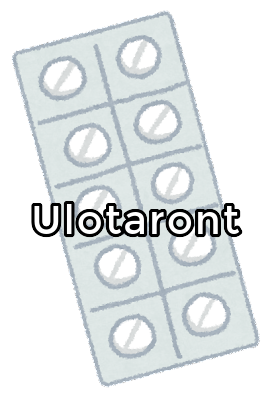Introduction
In Part2, I will write about the efficacy of Ulotaront, one of the most anticipated antipsychotic drugs of the moment.
In Part1, I wrote about TAAR1 agonist and the side effects and development status of Ulotaront. Click here for a link to Part1.
New Antipsychotics 3: Ulotaront Part1(Side Effects, Phase, TAAR1)
Efficacy (Clinical Trial Results)
In the Phase2 study, the efficacy of Ulotaront was measured using the Positive and Negative Symptom Scale (PANSS).
The higher the PANSS score, the more severe the schizophrenia. The efficacy of a drug is determined by the mean reduction in PANSS scores of patients treated with the investigational drug.
In addition, the “Difference” between the “Mean score reduction” from the investigational drug and the “Mean score reduction” from the placebo drug is calculated.
Then the “Difference from placebo” is calculated. As evidence of efficacy, the “Difference from placebo” is higher than the “Mean score reduction“.
For more information on PANSS, please refer to the following article.
Positive and Negative Syndrome Scale(PANSS, Scale used to measure efficacy)
The Phase2 study was conducted over a period of 4 weeks (28 days). First, let’s look at the results of its PANSS Total score in the table below.
| PANSS Total Score | Ulotaront | Placebo |
| Mean score before drug administration | 101.4 | 99.7 |
| Mean score after 28 days of drug administration | 84.2 | 90.0 |
| Mean score reduction | -17.2 | -9.7 |
| Difference from placebo | -7.5 | |
| 95% confidence interval | (-11.9 to -3.0) | |
| p-value | 0.001 | |
| Effect size | 0.45 |
The efficacy of Ulotaront is indicated by “Mean score reduction,” “Difference from placebo,” “95% confidence interval,” “p-value,” and “Effect size“. For an explanation of these terms, please see this article.
How to judge the efficacy of investigational drugs for schizophrenia & examples of efficacy data coming soon!
First, let’s look at the “Effect size“. The “Effect size” is the “Difference from placebo” divided by the “Standard deviation“. Effect sizes can be used to compare efficacy data from different clinical trials.
Overall Effectiveness
The effect size for the PANSS total score for Ulotaront was 0.45 in this study. This numerical value appears to be comparable in efficacy to the average antipsychotics.
The effect sizes for the PANSS total score for the other medications are shown in the following table.
| PANSS Total | Effect size | ||||
| Cloza pine | 0.89 | Sulpiride | 0.48 | Asena pine | 0.39 |
| Ami sulpride | 0.73 | Chlorpro mazine | 0.44 | Lurasi done | 0.36 |
| Olanza pine | 0.56 | Quetia pine | 0.42 | Caripra zine | 0.34 |
| Risperi done | 0.55 | Aripipra zole | 0.41 | Iloperi done | 0.33 |
| Paliperi done | 0.49 | Ziprasi done | 0.41 | Brexpipra zole | 0.26 |
| Haloperi dol | 0.47 | Sertin dole | 0.40 |
The effect size of 0.45 for Ulotaront was slightly less than 0.48 for Sulpiride and 0.47 for Haloperidol, and slightly more than 0.44 for chlorpromazine and 0.42 for Quetiapine.

The overall efficacy of Ulotaront may be ordinary in the short term in phase 2 trial.
Long-term efficacy
Ulotaront’s efficacy was ordinary in the short-term 4-week study, but I think that its efficacy is quite high in the long-term study.
After the completion of the 4-week Phase 2 study of Ulotaront, a 26-week long-term study is continuing to investigate efficacy and safety.
However, since there are ethical issues with using placebos, or fake drugs, in long-term trials, neither the “Difference from placebo” nor the “Effect size” can be calculated.
The only way to compare is by the “Mean score reduction” of the PANSS score for the investigational drug, which is somewhat low as evidence of efficacy.
During the 26-week long-term study, the “Mean score reduction” in the PANSS total for patients treated with Ulotaront was -22.6.
Of course, the greater the magnitude of the negative “Mean score reduction,” the greater the efficacy. This numerical value of -22.6 is quite large, as seen in the table below.
So far, I have only been able to identify four others, but the “Mean score reduction” of the PANSS total in the long-term study of other drugs is as follows.
| Long-term study (about 6 months) | PANSS Total Mean score reduction |
| Ulotaront | -22.6 |
| Lurasidone | -7.5 |
| Blonanserin | -6.4 |
| Brexpiprazole | -5.3 |
| Asenapine | -4.5 |
In long-term trials, the degree of improvement in symptoms with Ulotaront is outstanding, as shown in the table above.
The improvement is about 3 to 5 times greater than that of other drugs, which is a different order of magnitude.

Ulotaront seems to have the potential to be in the group with high long-term efficacy if considered over a period of about six months.
PS: It is true that Ulotaront was highly effective in long-term trials. However, the improvement in symptoms is particularly high in the early part of the long-term study (4 to 8 weeks after the start of treatment).
Effect on Positive Symptoms
Next, we will focus on the effect of Ulotaront on positive symptoms.
The effect size for Ulotaront’s PANSS positive score was 0.32 in this study. This numerical value may be in the less effective group.
The effect sizes for PANSS-positive scores for other drugs are shown in the following table.
| PANSS Positive | Effect size | ||||
| Ami sulpride | 0.69 | Haloperi dol | 0.49 | Lurasi done | 0.33 |
| Cloza pine | 0.64 | Asena pine | 0.47 | Caripra zine | 0.30 |
| Risperi done | 0.61 | Ziprasi done | 0.43 | Iloperi done | 0.30 |
| Chlorpro mazine | 0.57 | Quetia pine | 0.40 | Brex piprazole | 0.17 |
| Olanza pine | 0.53 | Sertin dole | 0.40 | ||
| Paliperi done | 0.53 | Ari piprazole | 0.38 |
The short-term efficacy of Ulotaront for positive symptoms came out to be similar to that of Lurasidone 0.33, cariprazine 0.30, and iloperidone 0.30.

The efficacy of Ulotaront on positive symptoms was not as high in the short-term study.
However, as mentioned earlier, it is possible that its effectiveness on positive symptoms in the long term, about six months, may not be as low.
Effectiveness on Negative Symptoms
Next, we will focus on Ulotaront’s effect on negative symptoms.
The effect size for Ulotaront‘s PANSS negative score was 0.37 in this study. This numerical value appears to be comparable to that of the average antipsychotics.
The PANSS negative score effect sizes for other medications are shown in the following table.
| PANSS Negative | Effect size | ||||
| Cloza pine | 0.62 | Paliperi done | 0.37 | Haloperi dol | 0.29 |
| Ami sulpride | 0.50 | Chlorpro mazine | 0.35 | Lurasi done | 0.29 |
| Olanza pine | 0.45 | Ari piprazole | 0.33 | Brex piprazole | 0.25 |
| Asena pine | 0.42 | Ziprasi done | 0.33 | Iloperi done | 0.22 |
| Sertin dole | 0.40 | Cari prazine | 0.32 | ||
| Risperi done | 0.37 | Quetia pine | 0.31 |
The short-term effectiveness of Ulotaront for negative symptoms was found to be at least as good as Risperidone‘s 0.37 and Paliperidone‘s 0.37.
Normally, however, a low PANSS positive effect size is linked to a low PANSS negative effect size.
Ulotaront has an effect size of only 0.32 on the PANSS positive score, but 0.37 on the PANSS negative score, which seems quite high.
It is quite unusual for the effect size of a negative score to be larger than that of a positive score. It foreshadows that the effect of Ulotaront on negative symptoms is high in the long run.

The effect of Ulotaront on negative symptoms was found to be ordinary in a short-term, 4-week study. It was comparable to Risperidone.
However, as I said earlier, I think it is possible that its effect on negative symptoms is high in the long term.
Comment
Ulotaront had an ordinary efficacy value in the short-term results of the Phase2 trial.
But there is a possibility that Ulotaront could have one of the much better long-term efficacy. Especially during the first 4-8 weeks of treatment, the improvement is greater than with other drugs.
It is also possible that the long-term effect on negative symptoms is very high, since the effect on negative symptoms was higher in the short-term 4-week study.
Ulotaront may also have few extrapyramidal symptoms and little or no weight gain.
It could become a real “breakthrough therapy,” as the FDA has designated it.
It could become a much-anticipated drug for many.
In Ulotaront’s Part 1 article, I write about TAAR1 agonists, side effects, and development status. Here is the link.
New Antipsychotics 3: Ulotaront Part1(Side Effects, Phase, TAAR1)
Additional new information.
A lot of benefits of taking Ulotaront: A new antipsychotic drug
Innovative Schizophrenia Drugs【Summary part 2】Ulotaront, etc.
Results of Phase 3 trials are now available.
【Ulotaront】U.S. Phase 3 Studies Failed. What’s Next? / Clinical Trial Data
[democracy id=”73″]References
- https://www.ncbi.nlm.nih.gov/pmc/articles/PMC6891890/
- https://www.nejm.org/doi/full/10.1056/NEJMoa1911772
- https://www.ncbi.nlm.nih.gov/pmc/articles/PMC8660889/
